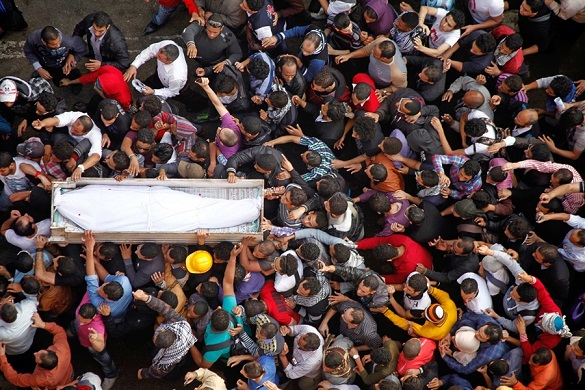Taliban leader Mullah Omar provided sanctuary to Osama bin Laden. Both men are now dead. But with the rise of Islamic State, there’s no end in sight to America’s 14-year-running “War on Terror.”
He had a $10 million bounty on his head for more than a decade. But the justice of the Old American West didn’t translate to South Asia. Mullah Mohammed Omar died in a Pakistani hospital more than two years ago, apparently from tuberculosis. Washington will keep its $10 million.
The US pulled no punches after 9/11. Its constitution was no obstacle. Yet through more than a decade of war, surveillance, detention and torture, the Afghan Taliban leader was ever elusive to the long and often merciless arm of American vengeance.
“Mullah Omar has protected himself not only from the public, but even from his own comrades in the Taliban,” Anand Gopal, author of “No Good Men Among the Living,” told DW. “There are very few members who’ve had access to Mullah Omar since 2001. In last four or five years, he has essentially vanished.”
Like Osama bin Laden, the Taliban leader probably crossed the porous Afghan-Pakistan border and found sanctuary on the territory of an ostensible American ally.
“Given the inadequate efforts by the Pakistani state to go after these kinds of individuals, and in the case of Mullah Omar, the enormous number of Afghan refugees made it relatively easy for him to find haven inside of Pakistan,” Daniel Markey, author of “No Exit from Pakistan,” told DW.
Sheltering Bin Laden
The Afghan Taliban leader wasn’t the mastermind of the September 11 attacks on New York and Washington. But he provided the physical sanctuary where Osama bin Laden’s network could plot the worst attack on American soil since the Japanese bombed Pearl Harbor.
In the end, Mullah Omar was also the man who refused to deliver Bin Laden to the United States, drawing Washington into a 13-year occupation of Afghanistan that cost more than 2,000 American and tens of thousands of Afghans lives.
“This despite the fact that most members of the Taliban wanted to hand over Bin Laden,” Gopal told DW. “[Mullah Omar] was caught in a very difficult position – he was leading an Islamic state yet he himself didn’t have very good Islamic credentials.”
“He was always very acutely aware of that contradiction,” Gopal said. “I think that’s one of the reasons why he was worried about how him handing over Bin Laden to a non-Islamic country would look in the eyes of his supporters.”
The mythology of Mullah Omar
All nations have founding mythologies. The Islamic Emirate of Afghanistan, as the Taliban referred to itself, was no exception. Mullah Omar donned a cloak supposedly worn by the Islamic prophet Muhammad, kept at a shrine in Kandahar. He declared himself the leader of all Muslims.
According to Markey, the mythology surrounding Mullah Omar kept the Taliban unified during the relentless US bombing campaign in 2001 and the subsequent invasion and occupation of Afghanistan. Nearly 14 years later, the Taliban still poses a potent threat to the American-backed government in Kabul.
But there’s an ironic twist to the story. Though in 2001 Mullah Omar was a symbol of Taliban intransigence, the US needed him now. Burgeoning peace talks in Afghanistan will prove useful only if there’s a united Taliban on the other side of the table.
“His death is somewhat worrisome, because you would want to see a unified Taliban be able to negotiate,” Markey said. “You would want to see at least the bulk of that movement be able to be brought into a political process and turned away from violence in the field.”
‘War on terror is a machine’
Though both Mullah Omar and Osama bin Laden are dead, there’s no end in sight to America’s 14-year-running “war on terror.” Islamic State, a former al-Qaeda affiliate, has risen from the ruins of Iraq and Syria. Another warlord, Abu Bakr al-Baghdadi, has declared himself leader of all Muslims.
And according to Markey, Washington is concerned that should the Afghan Taliban splinter, some elements could re-brand themselves as Islamic State affiliates, also known by the acronym ISIS.
“The war on terror is a machine that creates its own enemies as it goes on,” Anand Gopal said. “We started with Bin Laden, Mullah Omar and the Taliban. Today we have ISIS. Tomorrow we may have somebody else.”
“It’s a self-perpetuating logic,” he said. “As long as the war on terror is fought, it’s going to continue to create people who fight back. That’s going to continue to necessitate, in the eyes of the US administration, the fighting of the war on terror.”

